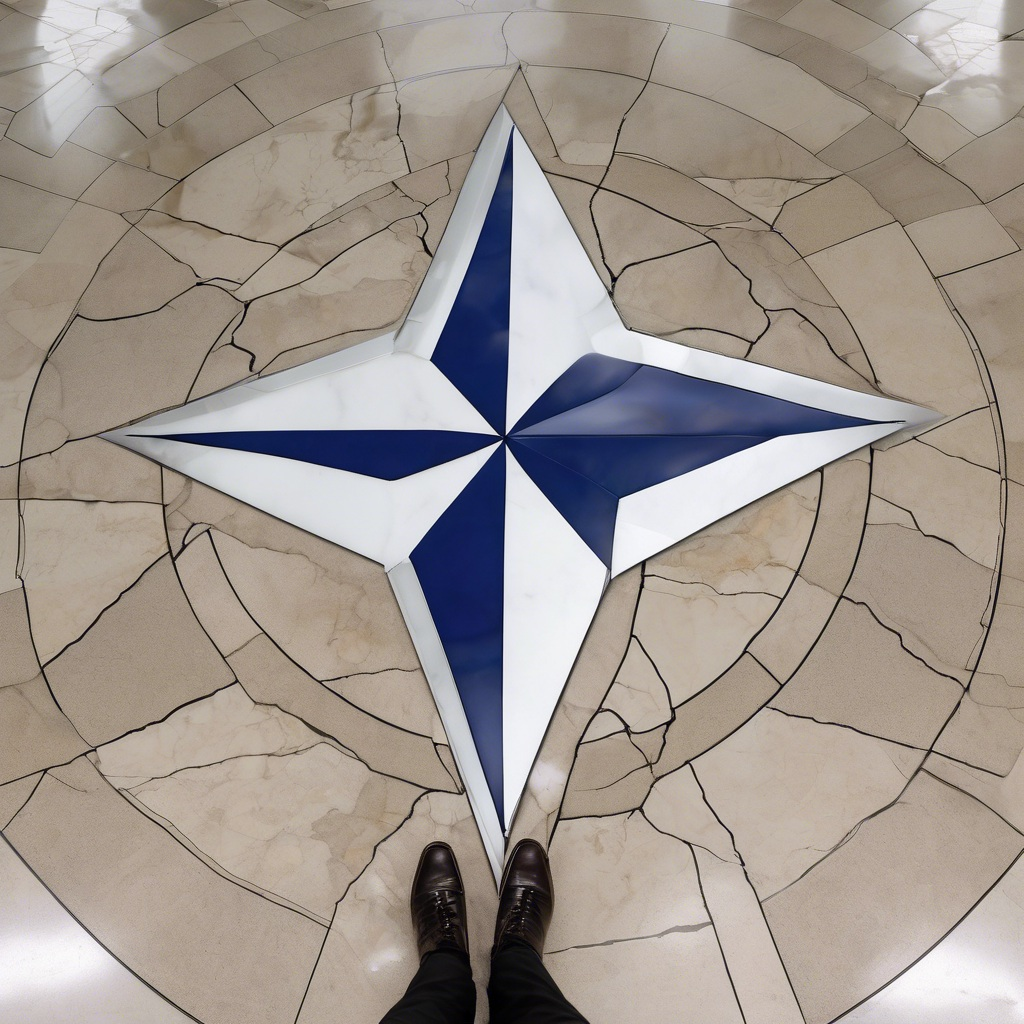
NATO allies face their most serious diplomatic crisis since the alliance’s formation in 1949. The once-solid partnership between the United States and European nations shows increasing signs of strain across multiple fronts. Recent policy decisions from Washington have created unprecedented tensions, challenging the fundamental principles of transatlantic cooperation. The relationship between these longtime partners has deteriorated significantly over defense spending requirements, trade policies, technology regulations, and approaches toward China. As European leaders chart an increasingly independent course, questions arise about the future of this historic alliance. These mounting pressures threaten to reshape the geopolitical landscape that has maintained Western security for over seven decades.

US Defense Chief Shocks NATO with New Burden-Sharing Demands
President Donald Trump’s demand for a dramatic increase in NATO defense spending has sparked unprecedented tension within the alliance. Speaking at the World Economic Forum in Davos, Trump called for NATO members to raise their defense spending to 5% of GDP, more than doubling the current 2% threshold .
Pentagon Announces 25% Defense Spending Requirement
The Pentagon’s new stance marks a sharp departure from the 2014 Defense Investment Pledge, when NATO members agreed to spend 2% of their GDP on defense by 2024 . Currently, 23 of the 32 NATO allies are expected to meet the 2% target . European allies and Canada have increased their collective defense investment from 1.43% in 2014 to 2.02% in 2024, representing more than USD 430 billion in combined defense spending .
European Leaders React with Dismay
European leaders have responded to Trump’s demands with a mix of resistance and concern. Key responses include:
Germany’s Chancellor Olaf Scholz rejected the 5% target as excessive, particularly after his country recently achieved the 2% benchmark , Poland and Lithuania emerged as exceptions, announcing plans to meet the 5% threshold by 2025, The United Kingdom’s Prime Minister Keir Starmer emphasized British commitment to European security, offering to deploy troops if necessary .
NATO Secretary General Calls Emergency Meeting
NATO Secretary General Mark Rutte subsequently called for emergency talks in Paris to address the mounting crisis . During the meeting, Rutte acknowledged that even the current 2% target would be insufficient for NATO’s future security needs . Furthermore, he warned that NATO members would need to find ways to increase joint purchases and use existing infrastructure, or face an increase in defense spending of up to 3.7% of their GDP . The situation has particularly affected Eastern European nations. Poland’s Prime Minister Donald Tusk urged immediate action to boost Europe’s defenses, warning that current capabilities do not match Russia’s threat . Meanwhile, French officials indicated that although no firm announcements were expected from the emergency talks, the focus remained on maintaining alliance unity. The United States currently spends approximately 3.4% of its GDP on defense, amounting to roughly USD 842 billion. Increasing this to 5% would push the Pentagon’s budget beyond USD 1 trillion . This unprecedented demand has prompted discussions about a potential compromise target of 3% at the upcoming NATO summit in The Hague .
Trade War Escalates as US Imposes New Tariffs
The transatlantic partnership faces another major challenge as the United States announces sweeping new tariffs on European imports. The White House’s decision marks a significant shift in trade relations between NATO allies.
Steel and Aluminum Tariffs Hit European Industries
The U.S. administration has declared a uniform 25% tariff on all steel and aluminum imports, effective March 12, 2025 . This represents a substantial increase from the previous 10% rate on aluminum . The action terminates all existing exemptions and arrangements with the European Union . Accordingly, these measures threaten approximately €3 billion worth of European steel exports and €2 billion of aluminum exports to the United States.
The impact on European industries is substantial:
Germany and Italy, as the sixth and tenth-largest U.S. suppliers of steel and aluminum, face exposure of USD 4.50 billion and USD 2.70 billion respectively
European steel companies project potential losses of up to 3.7 million tons in exports
The United States represents 16% of total EU steel exports
EU Prepares Retaliatory Measures
The European Union has promised “firm and proportionate countermeasures” to protect its economic interests . Brussels has prepared a comprehensive response package targeting specific U.S. products:
The European Commission plans to impose retaliatory tariffs worth 4.8 billion euros on U.S. goods . Moreover, the EU’s new Anti-Coercion Instrument (ACI) enables additional measures, including:
Restrictions on intellectual property rights affecting U.S. tech companies
Limits on foreign direct investment
Curbs on financial services access
The EU trade minister has scheduled emergency video meetings to coordinate the bloc’s response . Nevertheless,European officials emphasize their preference for negotiation, stating they “remain committed to constructive dialog” . The trade volume between both sides amounts to approximately USD 1.50 trillion, representing 30% of global trade .German Chancellor Olaf Scholz addressed parliament, stating that “if the U.S. leaves us no other choice, then the European Union will react united” . Consequently, European central bank officials warn that protectionist trade measures will negatively impact both economies, with French central bank governor Francois Villeroy de Galhau describing the tariffs as “very brutal” .
Technology Giants Face Regulatory Battleground
The digital realm emerges as a new battleground between the United States and European Union, as tech giants face Unprecedented regulatory pressure. The European Commission intensifies enforcement of its Digital Services Act (DSA) and Digital Markets Act (DMA), fundamentally altering how American technology companies operate in Europe .
US Tech Companies Challenge EU Digital Rules
Meta’s leadership openly confronts European regulations, with CEO Mark Zuckerberg describing the EU’s digital framework as “censorship” . Apple faces potential fines of up to 10% of its global annual turnover for alleged breaches of the Digital Markets Act . Essentially, these companies must now adapt to strict requirements, including allowing alternative app stores on iPhones and enabling third-party messaging services to work with platforms like WhatsApp . The regulatory impact on U.S. tech companies includes:
Mandatory transparency requirements for content moderation
New restrictions on data collection practices
Required interoperability with competing services
Enhanced user privacy protection measures
Data Privacy Becomes Major Flashpoint
The transatlantic data privacy dispute intensifies as cross-border information flows, valued at USD 260 billion in annual digital services trade , face mounting challenges. The EU-US Data Privacy Framework, representing the third attempt to broker a lasting agreement, remains vulnerable to legal challenges . Rather than accepting U.S. standards, the European Union maintains strict requirements for data transfers to non-EU countries .
Innovation Cooperation Stalls
Despite shared technological challenges, cooperation between NATO allies in the digital sphere faces significant obstacles. The EU’s comprehensive regulatory approach primarily conflicts with the U.S. market-driven model . Specifically, the implementation of the Digital Services Act creates new transparency requirements and mandates independent audits of large platforms.
The European Commission President, Ursula von der Leyen, underscores this stance: “Tech giants must assume responsibility for their enormous systemic power in our society and economy” . Therefore, the Commission plans to develop an action plan against cyberbullying and conduct an EU-wide inquiry on social media’s impact on wellbeing. The regulatory divergence undoubtedly affects transatlantic cooperation, as U.S. tech companies threaten to involve the incoming Trump administration in challenging EU regulations . This tension extends beyond individual companies, affecting the broader NATO alliance’s ability to coordinate on technological innovation and cybersecurity measures .
China Policy Creates Deep Transatlantic Divide
Divergent approaches toward China create unprecedented friction between NATO allies, as European nations chart an independent course in their relationship with Beijing. French President Emmanuel Macron’s statement emphasizes Europe’s need to reduce dependency on the United States and avoid being drawn into U.S.-China confrontations .
Europeans Resist US Pressure on Beijing
European Union leaders primarily seek a balanced approach with China, despite U.S. pressure for a harder stance. Indeed, the EU Commission President, Ursula von der Leyen, advocates for “a more balanced relationship with China” focused on overcoming economic imbalances . This position notably differs from Washington’s more confrontational strategy. The European response varies significantly across the continent:
Southern European nations maintain positive relations with China, seeking economic advantages
Northern European countries, especially Germany and Denmark, show increasing skepticism
Hungary and Slovakia actively resist restrictions on Chinese investments
Economic Dependencies Complicate Alliance
The depth of economic entanglement presents substantial challenges for NATO allies. Chinese state-owned enterprises presently control approximately 10% of all European port throughput and maintain direct presence in at least 15 European
ports crucial to NATO military mobility . Additionally, the EU’s critical mineral supply chain reveals significant vulnerabilities, with China supplying 98% of the bloc’s rare earth metals .The economic relationship creates complex dynamics within the alliance. A rapid U.S. withdrawal from Europe, as some advocate, could backfire by pushing Europeans closer to Beijing . European nations might intensify their trade relations with China to maintain economic stability and fund increased defense spending .
The EU’s position as the world’s largest trading bloc makes it a crucial player in any potential crisis involving China.Overall, Europe’s strongest leverage lies in trade measures targeting China’s access to the EU market . However, mounting U.S. pressure and potential trade conflicts could force European nations to choose between immediate fiscal needs and long-term strategic independence . Brussels has adopted a pragmatic stance, continuing dialog and cooperation in selected areas such as trade, economic affairs, and climate change . This approach reflects the EU’s broader strategy of maintaining strategic autonomy while managing relationships with both Washington and Beijing.
European Leaders Chart Independent Course
Amid growing transatlantic tensions, France and Germany forge ahead with ambitious plans to strengthen European defense capabilities. The Franco-German Defense and Security Council recently outlined comprehensive measures to enhance military cooperation between the two nations .
France and Germany Propose EU Military Force
The bilateral partnership between Paris and Berlin primarily focuses on developing integrated military forces. Both nations have committed to converging their security and defense objectives . Their cooperation extends across multiple domains:
The Franco-German Brigade
Binational Air Transport Squadron in Evreux
Franco-German naval group
Former German Finance Minister Wolfgang Schäuble proposed sharing costs for France’s nuclear deterrent, known as force de frappe, in exchange for German protection under the French nuclear umbrella . Currently, France maintains 290 warheads, compared to America’s 5,550 and Russia’s 6,257 .
Strategic Autonomy Gains Momentum
The European Commission has taken decisive steps toward defense independence. Commission President Ursula von der Leyen announced a comprehensive strategy to strengthen military production and arms supply . Simultaneously, the EU has evolved into a significant defense player by:
Mobilizing resources to train Ukrainian forces
Supporting European defense research
Developing military capabilities
The EU Defense Industrial Strategy and European Defense Industrial Program, announced in 2024, offer valuable instruments for joint military development . Likewise, the establishment of the Directorate-General for Defense Industry and Space in 2021 strengthened the Commission’s role in defense matters .
New Partnerships Beyond Atlantic Alliance
NATO-EU cooperation has evidently expanded beyond traditional boundaries. The partnership now covers various domains,
including:
Countering hybrid threats
Cyber security and defense
Development of defense capabilities
Defense industry research
The most recent Joint Declaration, signed by NATO and EU leadership on January 10, 2023, addresses growing geostrategic competition and critical infrastructure protection . Soon, both organizations will focus on emerging technologies, space related issues, and climate change security implications . The European Union must become a “true geopolitical actor and security provider,” according to Franco-German leadership. Generally, this transformation requires significant investment in collective capabilities, including strategic airlift, air-to air refueling, and operational intelligence . Formerly dependent on U.S. capabilities, European nations now aim to develop these assets independently .
Conclusion
NATO allies stand at a critical crossroads, facing challenges unprecedented since the alliance’s formation. Tensions over defense spending requirements, particularly the proposed 5% GDP threshold, have strained traditionally strong partnerships. Trade disputes, marked by new U.S. steel tariffs and European countermeasures, threaten USD 1.50 trillion intransatlantic commerce. Technology regulations present another significant challenge. European Union’s strict digital framework clashes with American tech giants, affecting crucial areas like data privacy and platform governance. Consequently, divergent approaches toward China amplify these tensions, as European nations pursue balanced engagement while the U.S. advocates for a harder stance.
Nevertheless, European leaders demonstrate remarkable resilience through strategic initiatives. Franco-Germancooperation advances military capabilities, while EU defense programs strengthen continental security infrastructure.These developments signal a shift toward European strategic autonomy, though questions remain about the long-term sustainability of such efforts.
The alliance faces tough decisions ahead. European nations must balance their pursuit of independence against traditional security guarantees, while American leadership needs to recognize evolving European priorities. Above all, both sides share fundamental democratic values and security interests that transcend current disagreements. Ultimately, the future of NATO depends on finding common ground between American security demands and European Strategic aspirations. Success requires careful diplomacy, mutual respect, and recognition that a strong transatlantic partnership remains vital for global state.






